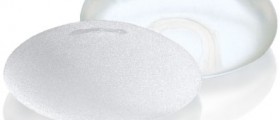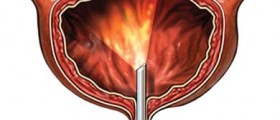Rectovaginal fistulas, which are tears in the membrane between the rectum and the vagina, are among the most common gynecological problems in the world. While they are relatively rare in the United States and Europe, tens of millions of women suffer them in sub-Saharan Africa, usually as a complication of childbirth. In the United States and Africa, the underlying cause of this condition is much more likely to be an autoimmune inflammatory disease, such as ulcerative colitis, or, more commonly, Crohn's disease. Hard-to-treat fistulas can occur after radiation treatment.
Most tears in this membrane are less than two centimeters (a little less than an inch) in diameter or smaller. Even a tiny fistula, however, the size of a ballpoint pen, can wreak havoc in a woman's life. The most common symptom of the problem is passage of gas or stool out the vagina, causing understandable distress. Sometimes fecal leakage is only a problem during diarrhea. In some cases, there is constant leakage of stool all the time.

When rectovaginal tears occur as the result of vigorous sex or the use of forceps in childbirth, they often heal on their own in 6 to 12 weeks. For a small tear, the doctor will usually want the patient to try a high-fiber diet, making it easier for bowel movements to pass, before going for surgery. Women are advised simply to take soluble fiber supplements and to eat more fruit and vegetables, in the hopes that surgical intervention will be unnecessary. This is a time it is very important to treat yeast infections and any kind of urinary tract infection, because both the urinary tract and the digestive tract can get infected at the same time.
- An anal fistula often can be simply cut out and sewed up. This approach does not work with a rectovaginal fistula. It would guarantee incontinence in most cases.
- "Layering" the membrane and sewing it together sometimes works. It's not a commonly used procedure.
- "Vaginal advancement" can move the vagina above the tear in the membrane. Although it's an outpatient procedure, it's painful, and requires strict avoidance of lifting and straining for two to three weeks.
- Putting in a prosthetic membrane is far more likely to be successful in treating rectovaginal tears and pouches. This procedure works about 58 percent of the time, judging by data from its first year of use.
- Women who have urinary tract infections should not have the transabdominal surgery.
- Women who have had damage to the urethra, anything that can cause narrowing of the passage for urine, also should not have this procedure.
- Women who have a history of small bowel disease (the part of the intestine that isn't connected to the fistula) likewise should not have this procedure.
- Tsang CB, Rothenberger DA. Rectovaginal fistulas. Therapeutic options. Surg Clin North Am. 1997 Feb. 77(1):95-114.
- Photo courtesy of SteadyHealth
















